Last Updated on August 21, 2023 by Grow with Bovees
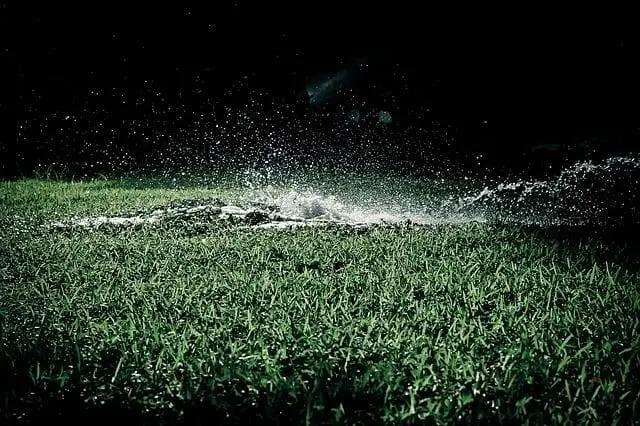
A beautifully maintained yard can add to the aesthetic appeal of your home. A wet, muddy yard with stagnant water is not only unsightly but can be caused by myriad problems, which can also kill the grass and damage your plants.
Constant tracking of mud into your home by people or your pets can be rather tiring. Moreover, chronic flooding of your yard can weaken the foundation of your home, erode the soil and damage your property seriously.
Accumulated water can also become a breeding ground for mosquitoes and other pests that spread diseases. So, as a homeowner, you must check and identify the source of the problem causing your yard to become wet, time and again and resolve it quickly. In this article, we’ll discuss the various ways of how to dry up your wet yard effectively.
During Rainy Season the Yard Will Likely Be Wet
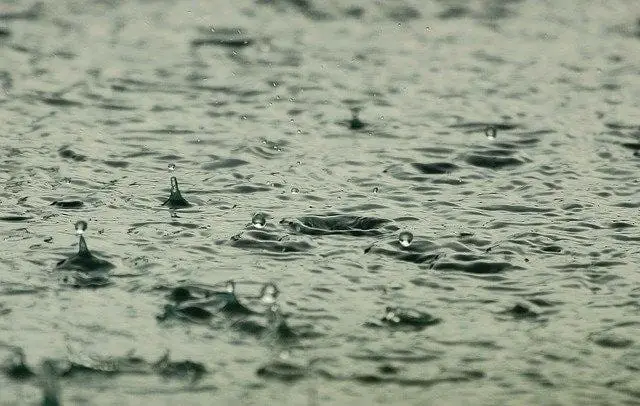
Wherever you live, a day or two of rainfall can turn your yard into a soggy mess that won’t dry out quickly. You can’t really prevent the yard from flooding during the rainy season.
While your garden requires rain, a constant downpour can harm your grass and plants. Normally, after a rainstorm, your yard should dry out after 1-2 days, which is fine.
However, if the puddles and soggy areas remain for many days after the rain or your yard tends to accumulate water, it means that there is a problem, which you must resolve to eliminate the standing water.
Check Drainage System for Leaks
If your yard is wet and muddy, even when there are no rains, then there must be a problem with your yard and you must determine the issue. One of the main reasons for a wet yard could be because the drainage system in your yard is poor.
The drainage also depends on the type of soil in your yard. If the soil in your yard is too rocky or compacted, it will not be able to absorb the water properly, affecting proper drainage.
Another cause of the accumulation of water in your yard could be the slope of the lawn. If your lawn is level or the center is slightly lower than the sides, this will cause the water to collect. Get an engineer or a plumber to check the drainage system of your home.
Check if the water flowing from the downspouts when it rains is carried to the drainage pipe or if it spills into the yard creating a wet and muddy pool.
Check for Leaking Incoming Water Pipe
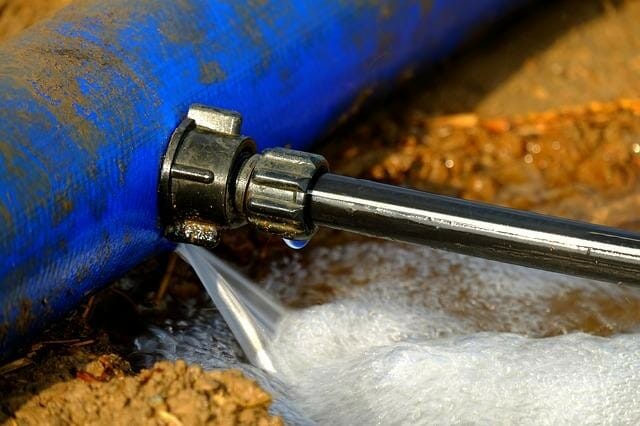
First, you need to check the drainage system and if it is fine, then next, you must check for leaking pipes. Check the main water pipe, i.e., the pipe from the water meter to your house. A leak in the water main may be the reason for the accumulation of water in your yard. Another indication that you may have a leak in your water pipe is increased water bills.
Also, check your faucets, irrigation system, garden hose reels, fountains, pools, ponds and other water features for any leaks. If you locate a leak in the water pipe, then it is a good idea to get a professional plumber to deal with the problem and fix the leak.
Check for Sewer Line Leakage
If you have checked the drainage system, as well as all incoming water lines for any leaks and have fixed them, but still find stagnant water in your yard, then it may be a sewer line problem. Any foul odor will confirm that the problem is with a leak in the sewage line.
The leakage from the sewer line does not fill up your yard quickly, but you will notice a slow, gradual collection of water, which can get murky and foul smelling after a few days.
A sewer line leakage can be a health hazard apart from causing damage to your plants, as well as your yard. So, if you find a sewer leak, then get the septic tank pumped and cleaned and get the sewer line fixed immediately by a professional plumber.
Steps to Fix the Leakage
Once you find a leak from any of the above sources and determine the problem area, you must fix it immediately with the help of a professional plumber.
If your yard is getting flooded because of the rain runoff, then check the position of the downspouts. Make sure that the downspouts extend past your home’s foundation by 6 feet (1.83 m) at least.
Try and position the downspouts so that they are directed towards a pond, ditch or any other area outside your yard.
Also, make sure that there is no debris or vegetation in the drainage area, where you’re directing the runoff water so that it can handle it efficiently.
If you suspect a leak in the pipe, turn off the water supply and check if the water meter is still increasing. Locate the leak and get it fixed immediately. If the leakage is in the underground municipal line running outside your home, then call your municipal body to fix it.
Is the Soil in Your Yard Mostly Clay, Silty or Loamy?
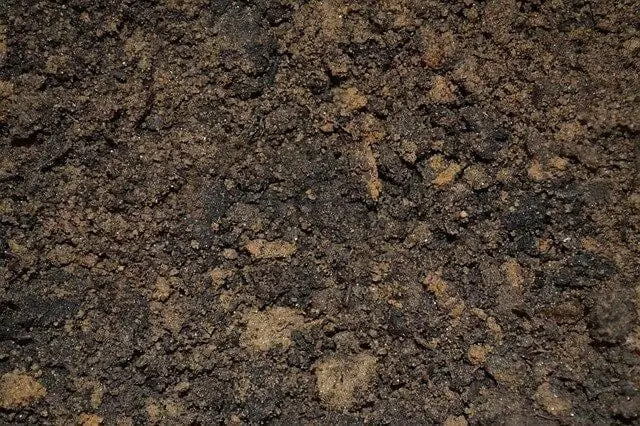
The type of soil in your yard can also be a major cause of water logging and a muddy yard. So, it’s a good idea to check out the soil map and determine the type of soil in your area, whether it is loamy, clayey or silty soil, before planning your garden.
Sticky, clayey soils or soil very close to the bedrock usually have poor percolation, which prevents the water from the surface from seeping into the ground.
The water sits on the material or just below the surface, causing it to remain wet and soggy. Hard pan or hard subsoil is impervious and is also another reason why water starts accumulating.
To remedy the problem, the first step is to test the soil in your yard and determine its absorbency. To do this, take a mason jar and fill it with soil from the area which has the most problem of water collection. Fill the jar with water and let it rest until the various components of the soil separate.
The sand usually sinks to the bottom of the jar, with the layer of silt above it and finally the clay layer. After a minute, mark the level of the sand, after 2 hours the silt level and once the water clears, measure the clay level and then measure the proportion of how much of each component is present in the soil.
Another method to test the soil absorbency is by digging a hole that is 1-foot in depth and 4 inches (10.16 cm) in width and fill it with water to see how fast it drains. If the water takes over 4 hours to drain the second time you repeat the exercise, then repair the soil by mixing in compost and sand.
How to Dry Out a Wet Lawn Quickly
In regards to how to dry out a wet lawn, it is important to consider various factors to effectively mitigate the issue.
As discussed above, it must be determined what caused the excessive moisture, as this will influence the appropriate course of action. Common causes include heavy rainfall, improper drainage systems, or overwatering. Once the cause is identified, steps can be taken to rectify the situation.
If heavy rainfall is the culprit, it is advisable to wait until the weather improves and natural evaporation can occur. In the case of improper drainage, ensuring that gutters, downspouts, and perimeter drains are clear of debris and functioning properly is crucial.
Creating drainage channels or installing a French drain system can redirect excess water away from the lawn. If overwatering is the issue, reducing irrigation frequency or adjusting the sprinkler system can help restore the lawn’s moisture balance. Strategic aeration, which involves creating small holes in the soil to improve airflow and water absorption, can also aid in drying out a wet lawn.
Remember, patience is key, as it may take time for the lawn to fully recover from the excessive moisture and restore its optimal health.
Using Sand
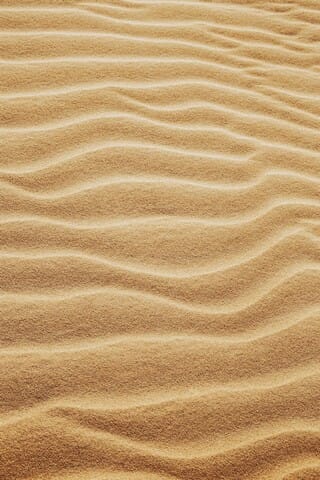
The best way to dry your wet lawn easily and quickly is by using sand. Adding sand to the soil will help the water to drain from the soil quickly and keep it dry. If the soil in your yard is clayey, then adding sand or gravel to it will help to dry it out very quickly.
You can spread sand in your yard by putting it into a broadcast spreader and spreading it over all the wet areas you want to dry up. Cover the area in a zigzag pattern until the sand starts building up in between the blades of grass. Allow the sand to settle for around a week and repeat the process until the area is dry.
Level the Yard
As we discussed earlier, another reason for the collection of water in your yard may be because of low-lying areas that collect the water easily or poor gradation, where your entire yard is low lying and the poor shape prevents the excess water from draining away.
The best way to resolve this problem is to regrade the lawn and level your yard so that the water can flow off your yard. You can do this by filling up all the low-lying areas with soil and fine gravel and bringing them up to the same level as the rest of your yard.
If the problem is with the entire yard, then you will have to rebuild the entire landscape to prevent water from collecting or soaking up in some areas.
For this, regrade your yard so that it slopes to one side instead of being all at one level, helping to improve drainage.
Make a slope of ¼ inch per foot or 2% away from your home, which helps the water to flow off. The easiest way to regrade is by removing the topsoil from the low-lying area and laying it on the upper side.
Aeration and Dethatching of Soil
Aeration to absorb water
The soil in your yard can become too compacted because of clay in it or because of the pressure applied by foot traffic. Aerating the soil in your yard can help to absorb the water instead of collecting on the surface and you can do this by using an aeration tool and poking holes in the surface.
The holes should be 4 inches (10.16 cm) deep at least and at a distance of 2 inches (5.08 cm) apart. If your yard is not too large, then you can use a manual aerator tool for this, but if you have a larger property, you may need to use an aerator that you tow behind a lawn tractor.
This helps to create breathing room, enabling the soil to absorb water better. Aeration of the soil helps to increase the water drainage and improves the health of your lawn because loosening the soil aids root growth.
Dethatching
When old grass in your lawn dies, it forms a layer between the ground and the blades of the green grass. This dead grass layer is called thatch and when it becomes around ½-inch thick, it prevents the ground from absorbing water. You can remove the thatch by using a lawn rake, a power rake or dethatcher.
Sow Grass Seed
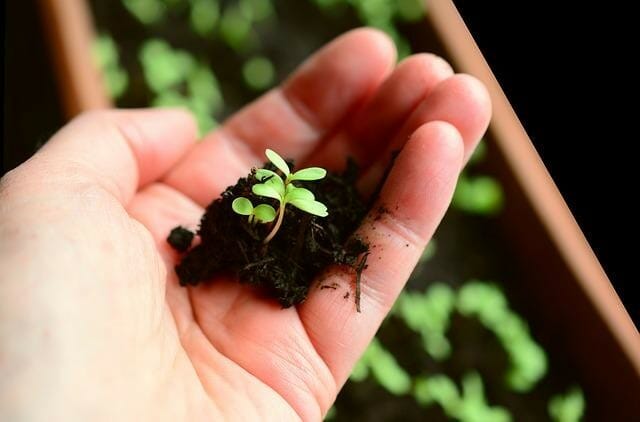
If you want to ensure that your yard remains dry, then one way to remove the water is by growing water-absorbing plants like grass or sod, because grass uses up a lot of water as it grows.
If you’re using sod, ensure that water doesn’t collect on the up slope of the elevation. If you’re sowing grass seeds, then make sure that there is around ¼ inch of topsoil along with a layer of straw to protect the seeds from birds and will also help the seeds to germinate quickly.
Install a French Drain
Also called a curtain drain, a French drain is a complete drainage system built from simple materials and an excellent way to keep water from collecting in your yard. A French drain is essentially a graded trench that is filled with gravel, rock and any other coarse material and has a perforated pipe at the bottom.
The French drain uses gravity to channel the water away from your lawn.
Install the French drain at the lowest end of the yard; however, if your yard is flat, then you may need to regrade it so that the water runoff flows into the drain.
Typically, a French drain has a depth of 18” to 20” and a width of 6”, having a 4” perforated pipe at the bottom. The trench is then filled with 12” of gravel and other landscaping material. You can put soil on top of the drain and reseed the area to keep the drain underground.
Replant With Water-Tolerant Plant Species
If the wet, muddy area is very small, then a great way to improve the water logging is by planting the area with water-tolerant plants that will not only soak up the excess water but also make the area beautiful, while attracting beneficial creatures.
You can get plants like ferns, elephant ears, violets, phlox, elderberry and arrowroot. Not only do these plants help to dry the yard, but their roots and organic matter help to loosen the soil and improve drainage.
Build a Rain Garden

A great way to resolve the problem of a muddy garden is to set up a rain garden, which comprises plants that grow very well in pools of water.
The rain garden uses the water that floods your yard and redirects all the excess water to an area, which you can plant with water-loving plants.
To build a rain garden, dig one or more trenches to direct the water to a low-lying spot in the garden. Dig the area to a depth of at least 4 to 8 inches (20.32 cm) so that it can hold water. Place rocks around the border of your rain garden.
You can plant water-tolerant plants such as swamp rose, sedge, lilies, goldenrod, iris, elderberry, blue vervain, cone flowers, etc. that can thrive even in 6 inches (15.24 cm) of water. A rain garden is a functional and beautiful way to fix your wet lawn.
However, you must take care that you set up the rain garden at least 6 to 10 feet (3.05 m) away from the foundation of your home.
Conclusion Of How To Dry Up Your Muddy Yard
A wet and soggy yard can be messy and unpleasant looking, ruining the curb appeal of your home. Fixing your wet yard using one of the methods we have discussed in our article can help to resolve the problem areas in your yard and allow you to have a beautiful outdoor space to enjoy with your family and friends all year long.
References:
https://hort.ifas.ufl.edu/woody/drainage.shtml
https://www.fairfaxcounty.gov/soil-water-conservation/drainage-problem-plant-list/
